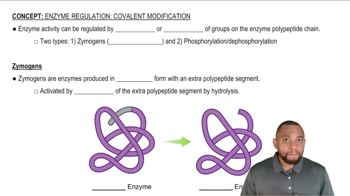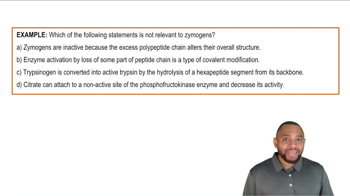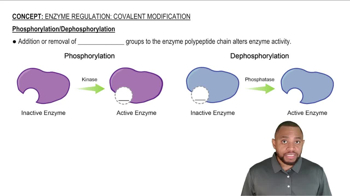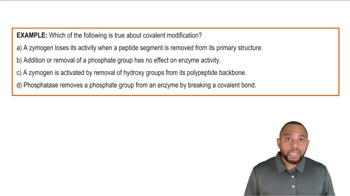19. Enzymes
Enzyme Regulation: Covalent Modification
Practice this topic
- Open Question
Match the terms (a) allosteric control, (b) feedback control, and (c) zymogen activation with each of the following:
_______ Pepsinogen is converted into its active form (pepsin) by losing 44 amino acids from its primary structure.
_______ A small molecule attaches to the enzyme and makes an active site available to a substrate.
_______ The end-product of a metabolic pathway decreases the activity of the enzyme in the first step.
_______ Alanine binds to pyruvate kinase and reduces active site availability for the enzyme's substrate.
252views - Open Question
Match the terms (a) allosteric control, (b) feedback control, (c) zymogen activation, and (d) phosphorylation/dephosphorylation with each of the following:
_______ Proline inhibits glutamate 5-kinase, the enzyme in the first step of the biosynthesis of proline from glutamate.
_______ Glycogen synthase loses its catalytic activity when it is phosphorylated.
_______ Proelastase is converted to its active form elastase when it loses some part of its polypeptide backbone.
_______ Adenosine monophosphate binds to phosphofructokinase-1 and increases its activity.
360views - Textbook Question
Activation of a zymogen is by covalent modification. How might phosphorylation or dephosphorylation (also covalent modification) modify an enzyme to make it more active (or more inactive)?
727views - Textbook Question
Which type of enzyme regulation is best for the following situations?
a. An enzyme that becomes overactive during a disease
b. An enzyme needed only when there is low blood glucose
c. An enzyme that springs into action when a traumatic injury occurs
d. An enzyme needed only during adolescence
1004views




